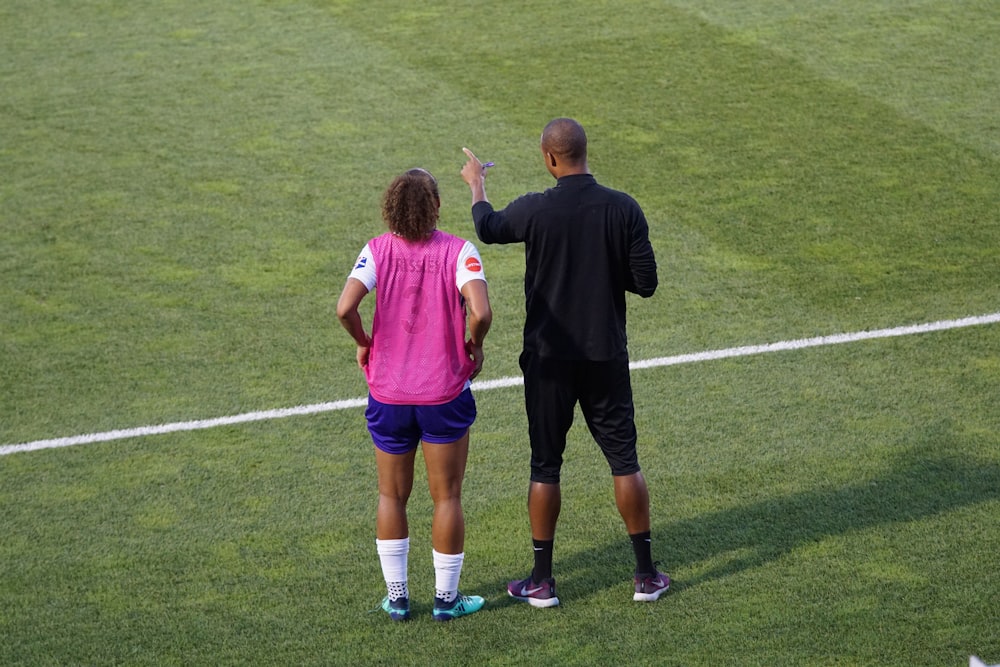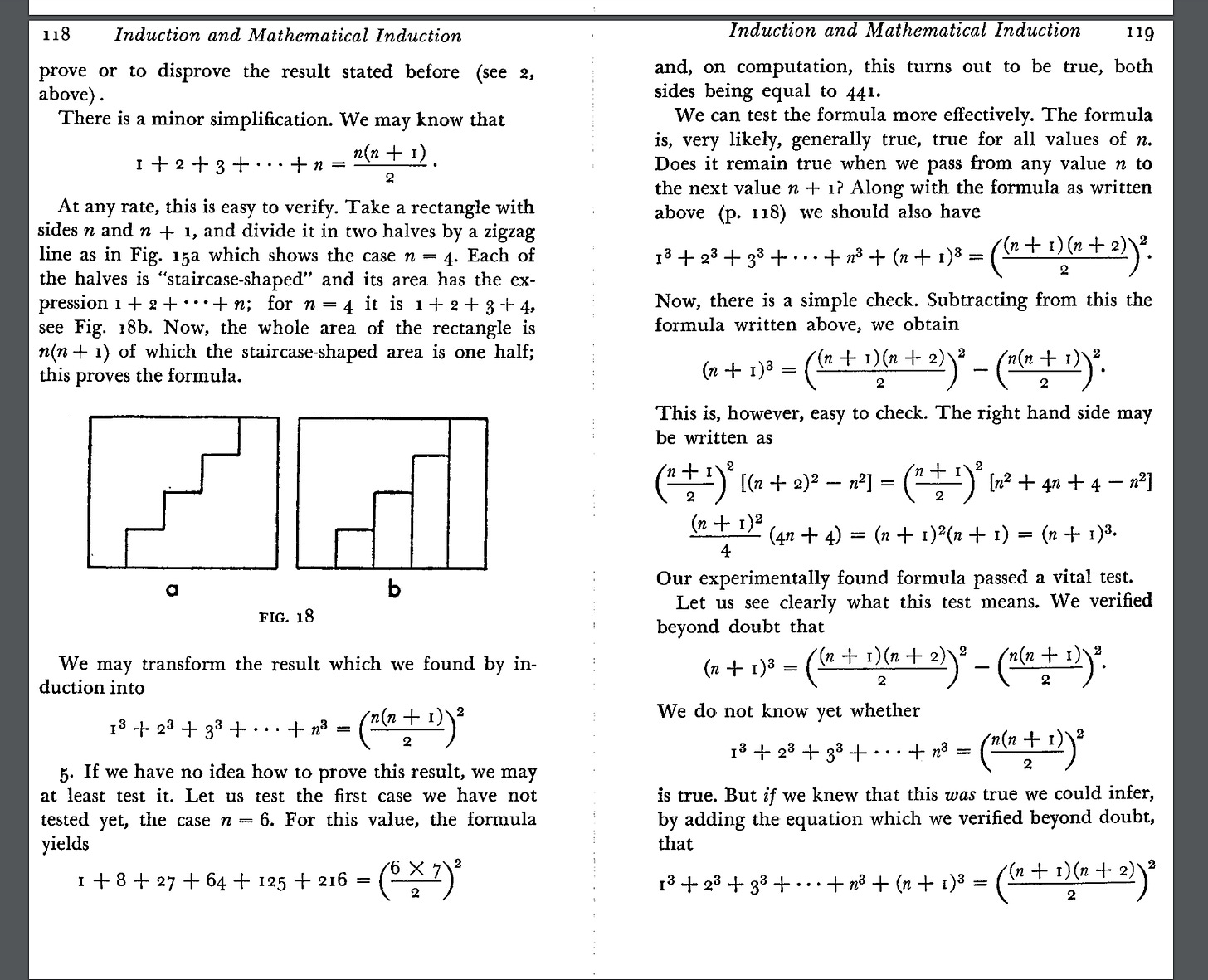
Two stages to mastering a skill
In sports, academics, and life, there are two broad stages of learning:
Learning the material
Learning the human elements of using the material
Learning the “game”
Looking at the soccer header image, first, you learn basic soccer skills: passing, trapping the ball, what various positions do, various ways to kick the ball, general fitness, etc.
Learning the “game behind the game”
As you play soccer for a while, you start to learn the strategy around applying those skills, and you then discover the history of various ways coaches and athletes have tried to use those skills.
Then, you learn how to recognize when your opponent is using those skills against you and what responses work against what strategies.
It’s all still called soccer, and you “practice soccer” and “play soccer,” but at some point, the practice of an advanced soccer player looks completely different from your local 6-year-old soccer team practice.
Metagame
There is, of course, a name for this second stage: “metagame.”
From Wikipedia:
The word metagame is composed of the Greek-derived prefix meta– (from μετά, meta, meaning "beyond") and the noun game.
“Beyond the game” or, as it is more popularly known - the game behind the game.
Math “Game” and Math “Metagame”
For our newsletter “Kids Who Love Math,” where we focus on things parents/guardians/educators can do with math kids before they get to college, we can break it down into:
Learning the material: learning the math that is taught in schools
Learning the human elements of using the material: how to solve problems and what to do when you can’t solve them (if you can even figure out if you’ve solved it correctly)
Math “Game” resources
A whole industry makes “math textbooks” and “math supplementary” materials.
For an eye-opening article on how much money one author made from a calculus textbook (and the house he built using those funds), you can read this article: https://www.fastcompany.com/3052267/the-house-that-calculus-built
Art of Problem Solving, an extracurricular resource that our family has used extensively and is my number one math resource recommendation, has publicly shared the numbers of having 10,000 to 20,000 students a year take its math classes (which go from 1st grade through Calculus, as well as some Physics, Computer Science, and Language Arts classes).
Math “Metagame” resources
Though not explicitly taught as a math class, strategies for solving problems are sometimes taught in school.
Your math kid has no doubt heard about double-checking their work, working backward, and estimating the problem.
It’s not until they get almost college-age that resources for the metagame start to appear.
The classic book here is How to Solve It Book by George Pólya, a Stanford Math Professor.
Princeton University Press description is as follows:
A must-have guide by eminent mathematician G. Polya, How to Solve It shows anyone in any field how to think straight. In lucid and appealing prose, Polya reveals how the mathematical method of demonstrating a proof or finding an unknown can help you attack any problem that can be reasoned out—from building a bridge to winning a game of anagrams. How to Solve It includes a heuristic dictionary with dozens of entries on how to make problems more manageable—from analogy and induction to the heuristic method of starting with a goal and working backward to something you already know.
This disarmingly elementary book explains how to harness curiosity in the classroom, bring the inventive faculties of students into play, and experience the triumph of discovery. But it’s not just for the classroom. Generations of readers from all walks of life have relished Polya’s brilliantly deft instructions on stripping away irrelevancies and going straight to the heart of a problem.
The University of Hawaii Math Department hosts a digital copy here: https://math.hawaii.edu/home/pdf/putnam/PolyaHowToSolveIt.pdf.
How to Solve It is all very well and good (and I highly recommend it), but the pages and prose look like this:
Which can be helpful if you’ve seen or at least played around with proofs, sequences, some geometry, and some basic algebra.
But for our kids in elementary school and middle school, it’s going to be hard to get them to sit down long enough to work through it (even if we do it with them).
Something for the young(er) math kids
So here are some strategies that I’ve slowly cobbled together that might work for your kid when they are struggling with how to solve it.
Look at what chapter/section you are in
Look at what techniques you used in the last few problems
Look at what techniques you used in the last chapter/section
Write down all of the information that was given to you
Draw a picture or diagram to visualize the problem
Look at the previous problems
How is your current problem similar to the previous ones
How is your current problem different from the previous ones
Can you break the problem down into smaller steps
Think through the problem step-by-step by writing out each step
Explain the problem out loud in your own words
Is there missing information or instructions
Did you miss any information or instructions
What are the key numbers, variables, and unknowns
Can you eliminate any options or ways you’ve learned to solve problems (does this look like a multiplication problem?)
Guess the answer and work backward to see if you can get the right initial conditions
Look for a simpler, similar problem and build up in complexity
What other multiple approaches can you use (visual, guess and check, estimate, make the numbers smaller)
What other strategies have you not tried?
Can you practice easier problems to see if there was a step that you didn’t quite understand?
Learning math is hard so they’ll get things wrong all the time
Learning math is hard.
When I got to college I asked one of my math professors what their job was like.
They said reading math papers and trying to apply what they learned from others to their own problems.
I asked how long it took to read a paper and understand it enough to apply it to one's own problems.
They said about 1 page per day.
I was shocked.
They said learning new math is hard, even if you’re a math professor whose job is doing math.
So when my kids get upset that they can’t figure out a problem or that they got a wrong answer, I tell them it’s not the end of the world and we go to the “simple strategies” above.
Self-coaching
The ideal situation is that they slowly learn how to self-coach themselves.
Per the sub-heading “Getting stuck in a math problem and how to get unstuck.”
They are going to get stuck, so it’s important to start developing the machinery for figuring out how to get unstuck.
The way to get unstuck is to be able to self-coach as they learn the material and try to use the new material.
What strategies have you found helpful?
What did you find helpful to your math kids?
What did you find helpful when you were growing up?
Please share in the comments below if anything comes to mind.
That’s all for today :) For more Kids Who Love Math treats, check out our archives.
Stay Mathy!
All the best,
Sebastian Gutierrez
.



